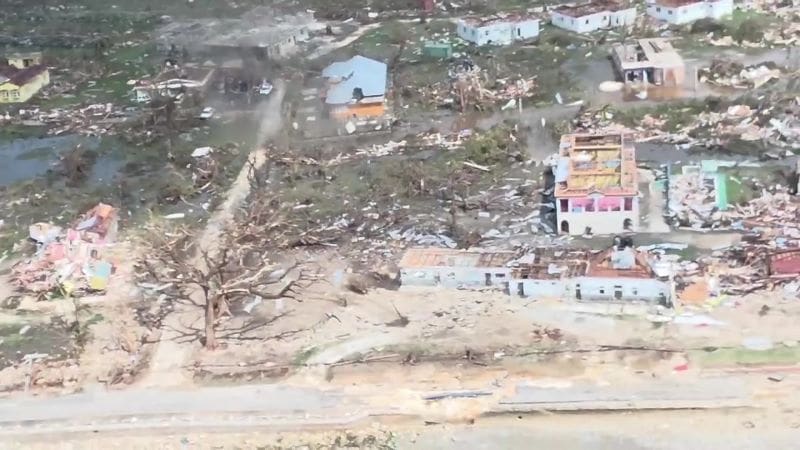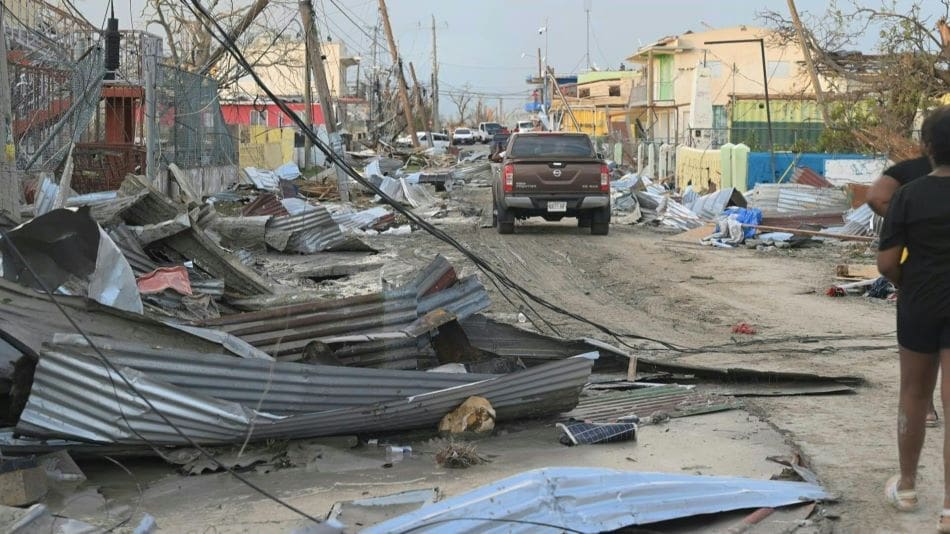St. Ann, Jamaica | AFP
In the north coast parish of St. Ann, almost all residents are without power — and many of them woke up without a roof over their heads after Hurricane Melissa tore through Jamaica, downing trees, utility poles and anything in its path.
Fisherman George “Larry” Brown of the community of Priory said the morning was quiet on the day of the storm.
“Just a little rain,” the 68-year-old recalled.
But by 5:00 pm (22:00 GMT) on Tuesday, the rain and wind gusts grew heavy and soon, he said, his roof peeled away.
“I just heard a sound, and it just started to tear off,” Brown recalled.
He described Melissa as the worst he’s ever experienced.
Hurricane Melissa smashed into Jamaica as a ferocious top-level storm, with sustained winds peaking at 185 miles (nearly 300 kilometers) per hour while drenching the nation with torrential rain.
“Gilbert is no match to this,” Brown said, referring to the 1988 hurricane used by many Jamaicans as a benchmark for devastation.
In fact, Hurricane Melissa tied the 1935 record for the most intense storm ever to make landfall, according to an AFP analysis of meteorological data — on par with the Labor Day Hurricane that devastated the Florida Keys 90 years ago.
Brown’s neighbor Kayan Davis, a mother of three who said her roof lifted off sometime after 11:00 pm (04:00 GMT), said she has been left temporarily homeless.
“I have no where to sleep… I am going to have to contact the authorities,” Davis said.
Marvin Thomas, another resident of Priory, suffered the same fate when a tree fell on his home around 8:00 pm (01:00 GMT).

“The tree dropped… and the housetop started to demolish,” he said. “I had to run out and go to a friend’s home.”
Thomas, a 40 year-old janitorial services worker, said the challenge of finding money to begin picking up the pieces is daunting.
“You know money is not at one place, I have to go out there to hunt now, to try to rebuild up myself.”
‘Thanks be to God’
There were similar stories in the neighboring parish of Trelawny.
“What we had was high rising of water and then it started to take the membrane of my roof and it damaged my fence as well,” Sandra Scott, a security supervisor, said of her home in the community of Salt Marsh.
“We had to use sandbags and sheets to prevent the water from coming in,” she explained.
The hurricane also brought extensive damage to infrastructure across Trelawny, including William Knibb High School, the alma mater of legendary Olympic sprinter Usain Bolt, according to parish police chief Velonique Campbell.
Campbell and a team of 30 officers were seen with machetes and chainsaws clearing blocked roadways across the parish.
“We noticed that quite a few trees have been displaced in the main road and we wanted to ensure that the main road is kept clear as there will be aid and other supplies coming in,” she said.
South of St. Ann, in the town of Bog Walk, bar owner Maureen Samuels breathed a sigh of relief after a large tree fell just inches away from her establishment.
“I came here this morning and saw what happened, thanks be to God the bar wasn’t damaged,” she said.
Others from the community weren’t as lucky, she said, noting that the nearby Rio Cobre overflowed and damaged some properties, including her friend’s hog farm.
“We have been affected badly,” she said.
bur-des/sha/jgc
© Agence France-Presse
Article Source:
Press Release/Material by Andre Rich | AFP
Featured image: Debris covers the streets in St. Elizabeth, Jamaica, after Hurricane Melissa tore across the island. The top-level storm made landfall on Tuesday evening, bringing winds peaking at 185 miles per hour while drenching the country with torrential rain. Melissa tied the 1935 record for the most intense storm to ever make landfall, according to an AFP analysis of meteorological data, on par with the Labor Day Hurricane that devastated the Florida Keys 90 years ago. Credit: Ricardo Makyn | AFPTV | AFP




